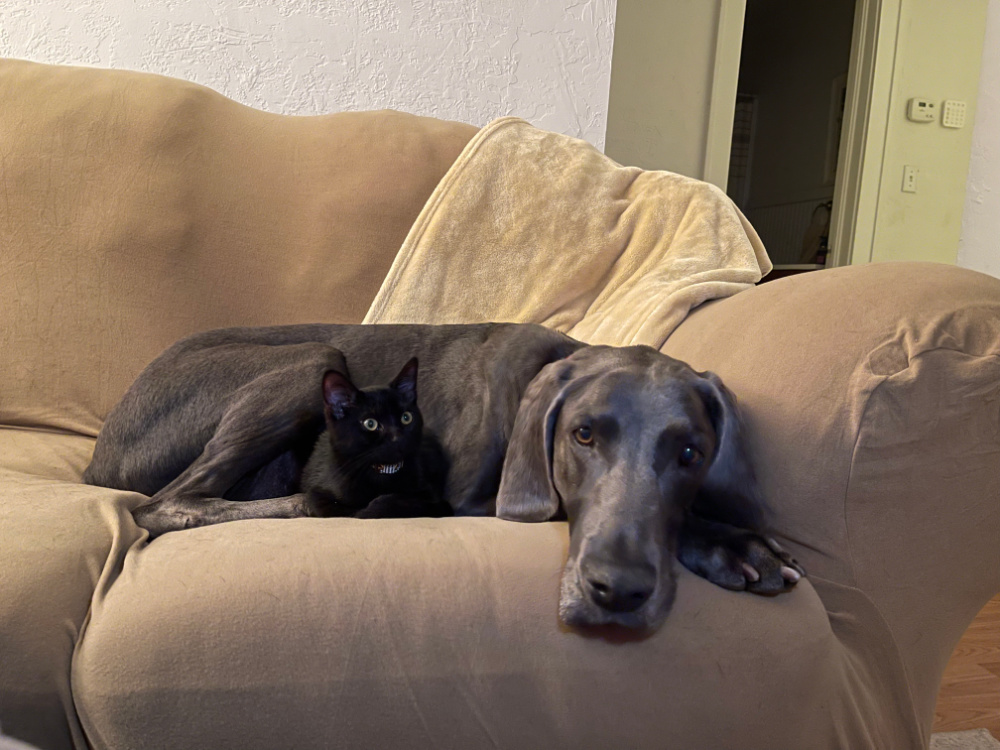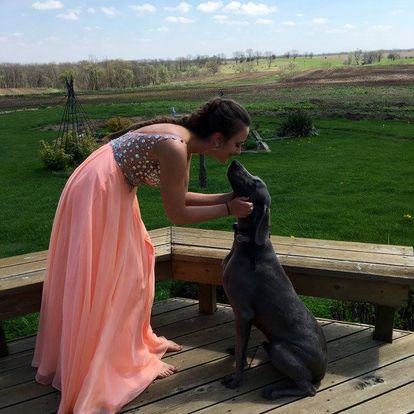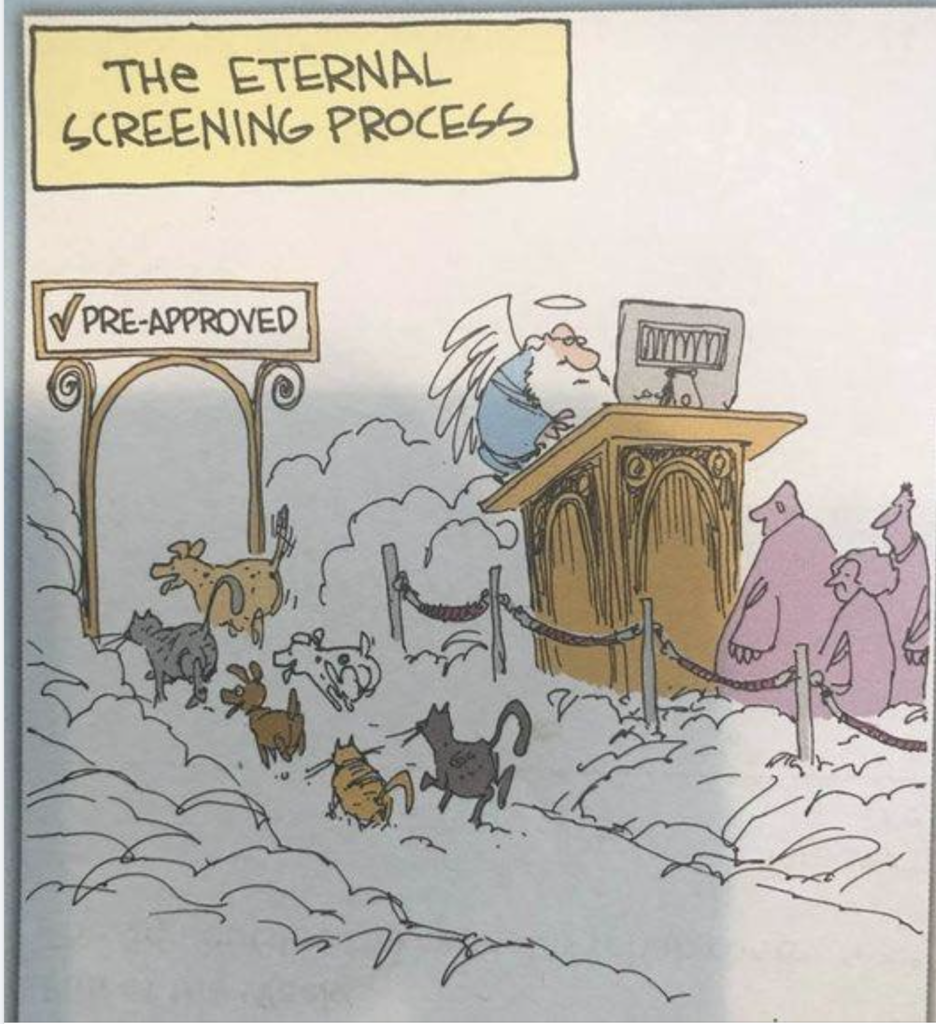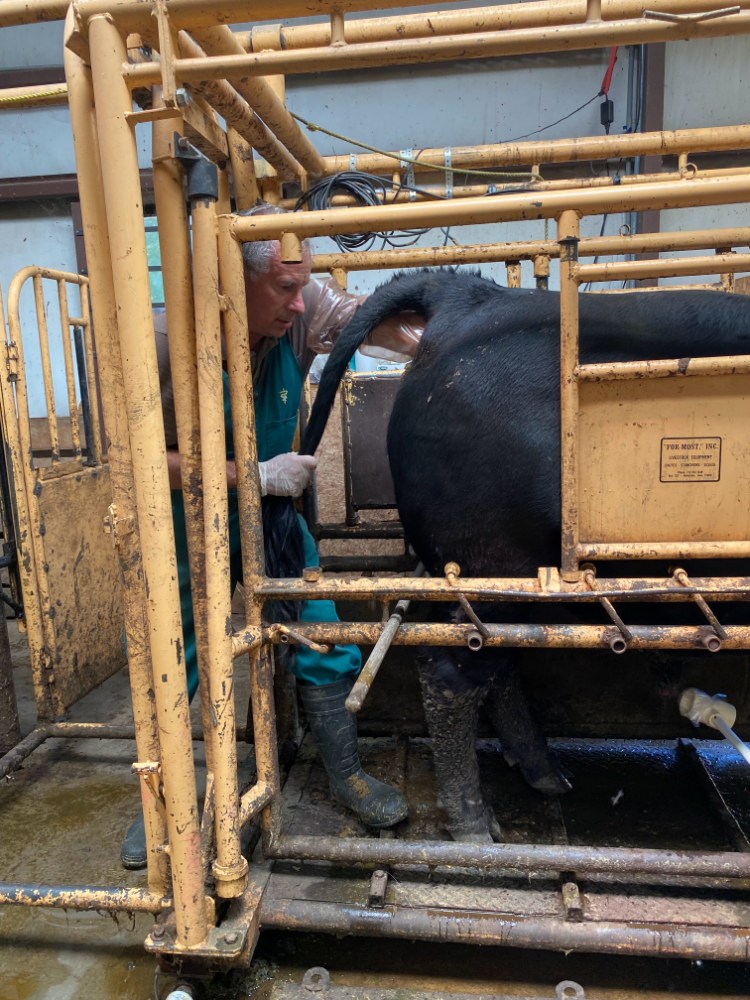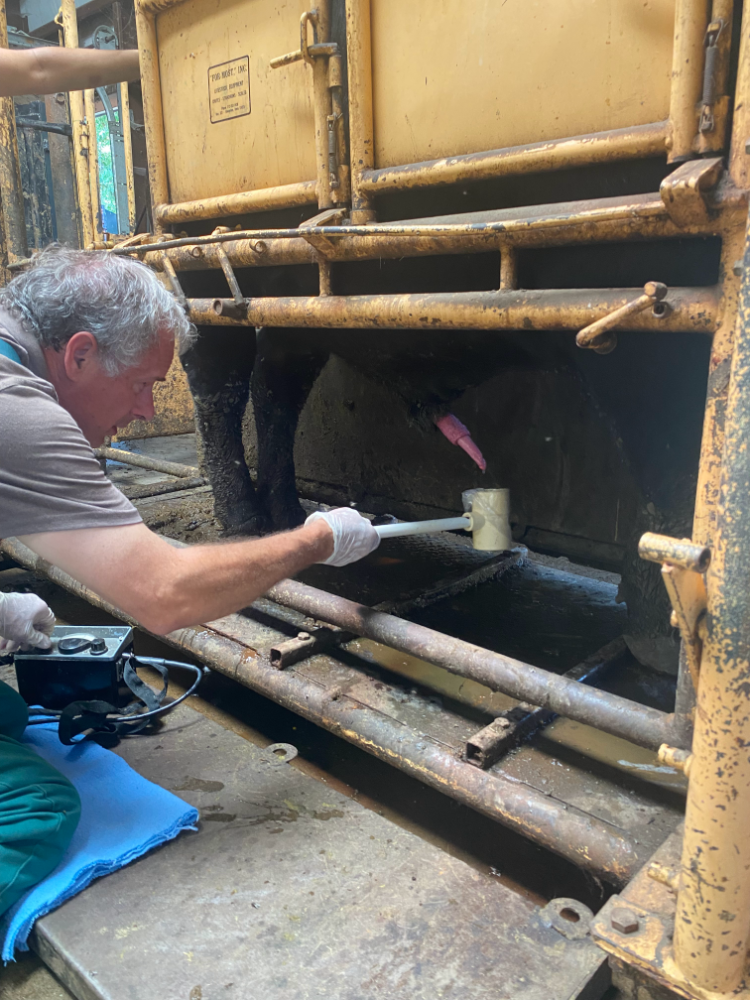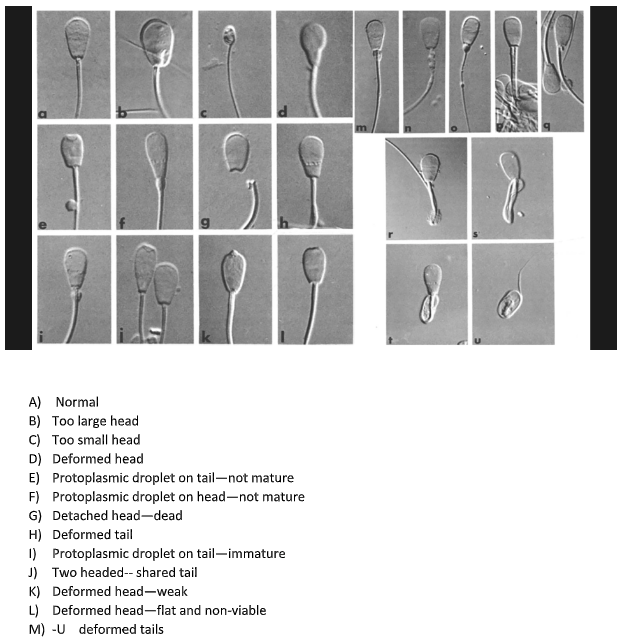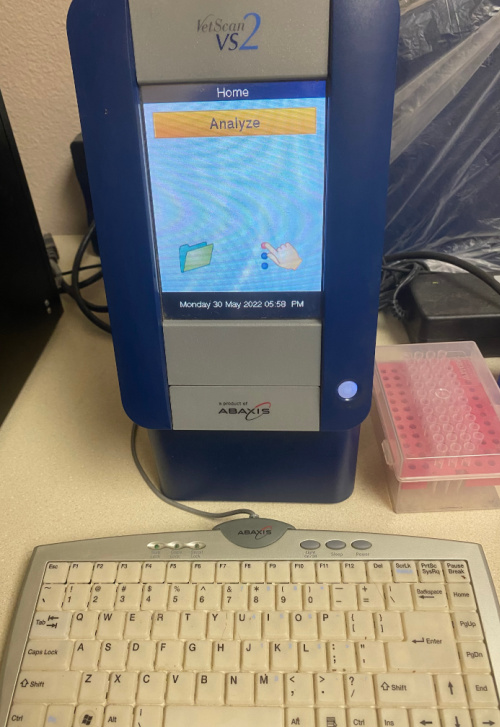All Dogs Go to Heaven
Today was the day. A day that we never want to come. A day that we dread. A day that will never be forgotten. A day when we said good bye to our Bleu.
We do not know all of his story since it began with someone else, somewhere else. In 2013 at Winterset Veterinary Center we were getting calls about these two stray dogs running across Madison County. They were killing and eating chickens outside of St. Charles. They were in a kennel but then escaped from a farm around Patterson. They are at the soccer field in Winterset. Once they got into the city limits is when we got involved. Two male intact purebred Weimaraner’s with orange hunting collars on. One appeared to be at least 1 year of age and the other less than 6 months since he did not have his adult teeth yet. We did not find any microchip or ID tags on either dog. We searched local lost dog sites and reached out to ARL to see if there had been any reports filed. Everything was a dead end. The younger one was gray, almost tan in color. The older one was Blue which is considered a diluted black.
Our family had lost our Chocolate Labrador Retriever a few months earlier. I wasn’t thinking about another dog but this blue dog with the long floppy ears won over my heart. He did not bark in the clinic. He did not jump up on me. He was house broke. He did not chew up his bedding. He was calm but could run fast when given the opportunity. He had short hair and a sweet personality. I decided to introduce him to my family and as they say… the rest is history.
Our youngest daughter JoAnn soon took on the challenge of training him and joined the 4-H dog project at the county level and took him to classes. She took him to dog classes at Dogwood Lodge and he was a quick learner. He was gentle with our cats and never knew a stranger. We were hooked. We purchased a wireless boundary fence and he quickly learned to respect the perimeters. Nothing gave him more joy than getting to go for walks and spending time with his new family. Of course from his days of hunger – he always ate his food in 15 seconds flat. Hardly a chance to taste it or chew it.
He was up for just about anything. He was in the parade for the Bridge Festival one year when Winterset Veterinary Center had a float entry. He was in a costume contest for 4-H. He did a 5K to benefit the dog park. He was good for demonstrations at obedience classes. Whenever he had to do the down stay in competitions, he would completely lay flat and almost go to sleep. Quite comical to say the least. JoAnn and Bleu were a good team. They did win trophies, but all Bleu wanted was attention from his favorite person, JoAnn.
Bleu became my walking partner each morning during the warm seasons and looked forward to this each day. When JoAnn went off to college he stayed with us and missed his snuggles with JoAnn. We traveled to Missouri to visit but each time we left to come home we had 2 broken hearts. The spring of her sophomore year she convinced us he should come and live with her. Her roommates were willing to help care for him and he would be a great “emotional support” dog for all of them. We gave in and he moved into their 4th floor apartment with no elevator. For the next 2 1/2 years he lived with JoAnn on and off. He would spend summers with us since she worked at a bible camp and could not have him with her. The reunions were always fun to experience as old friends were reunited.
Over the last 1 1/2 he started showing symptoms of loss of sensation to his limbs. Back feet first but eventually the front legs were fully involved as well. We had started chiropractic and acupuncture along with other non-traditional treatments at a clinic in Springfield and would continue when he returned home for the summer. This condition was not painful but it became increasingly difficult for him to walk and stand for any length of time. When his breathing became labored and he began coughing, I knew it was progressing to a new level. He also was uninterested in eating his food and struggled to chew his treats that he so loved. His mind was still intact but his body was shutting down. I contacted JoAnn and shared my concerns. I had hoped to keep him going until she got done with summer camp, but when these new symptoms began I knew we had to have a serious discussion. She made arrangements to come home. She spent a day with him just snuggling and being together. His reaction normally to her presence was that of complete euphoria. He didn’t know if he should jump or run or wiggle but his joy was undeniable. When she got home this time, he barely lifted his head. His body was tired and energy level low so a tail wag would have to do. These end of life decisions are the hardest decisions we make for our furry friends. We hesitate to make this decision because we selfishly want them to stay with us forever. Yet we know that is not possible with the physical issues at hand. I have always said a dog’s only fault is they don’t live long enough. We said goodbye and allowed him to leave this earth peacefully and with no more struggles.
Long ago I ran across the following reading and wanted to share it with my readers. If you have been reading my blogs…..I know you have also lost some faithful companions over the years.
Rest in peace, Bleu!

